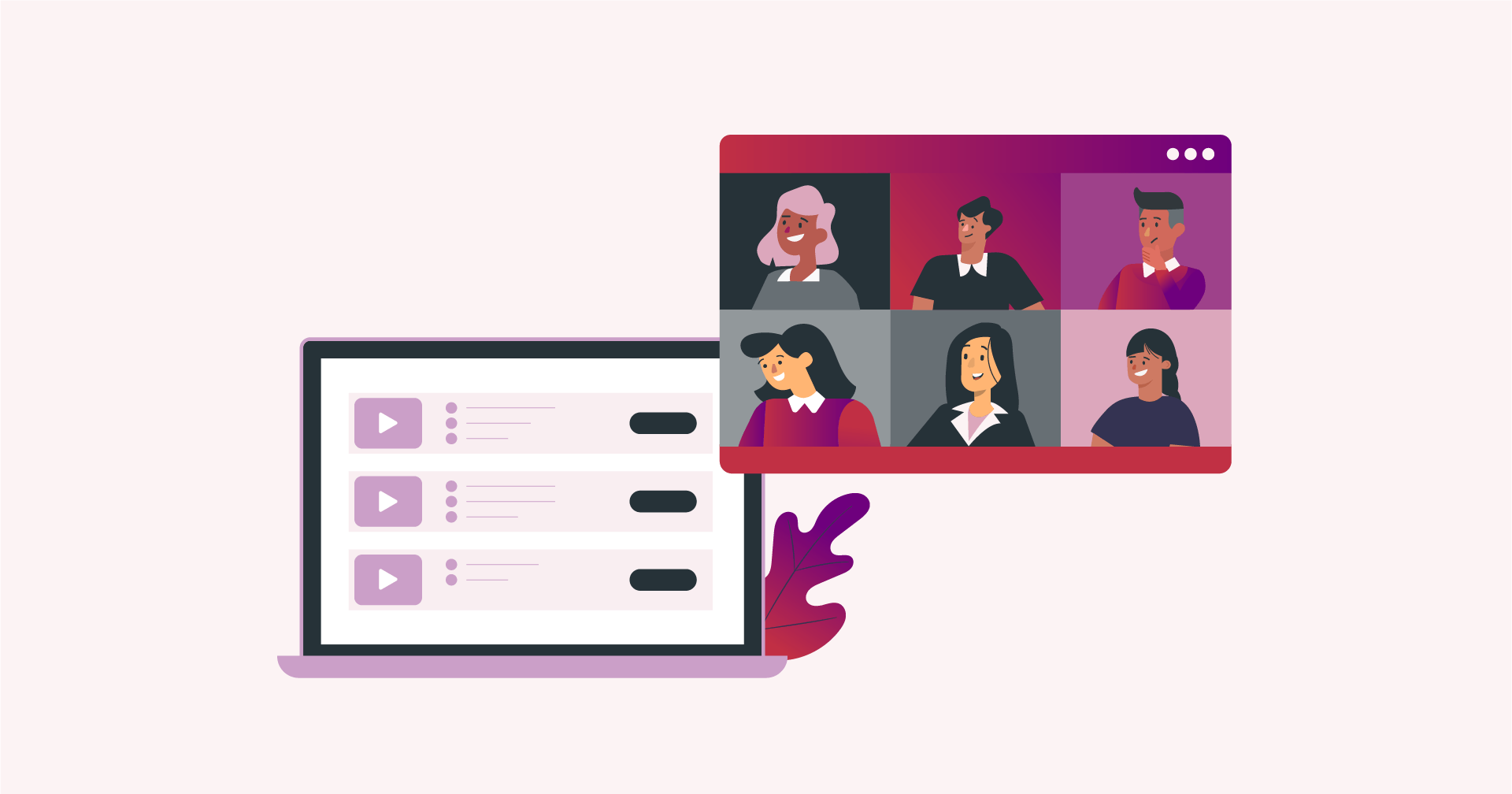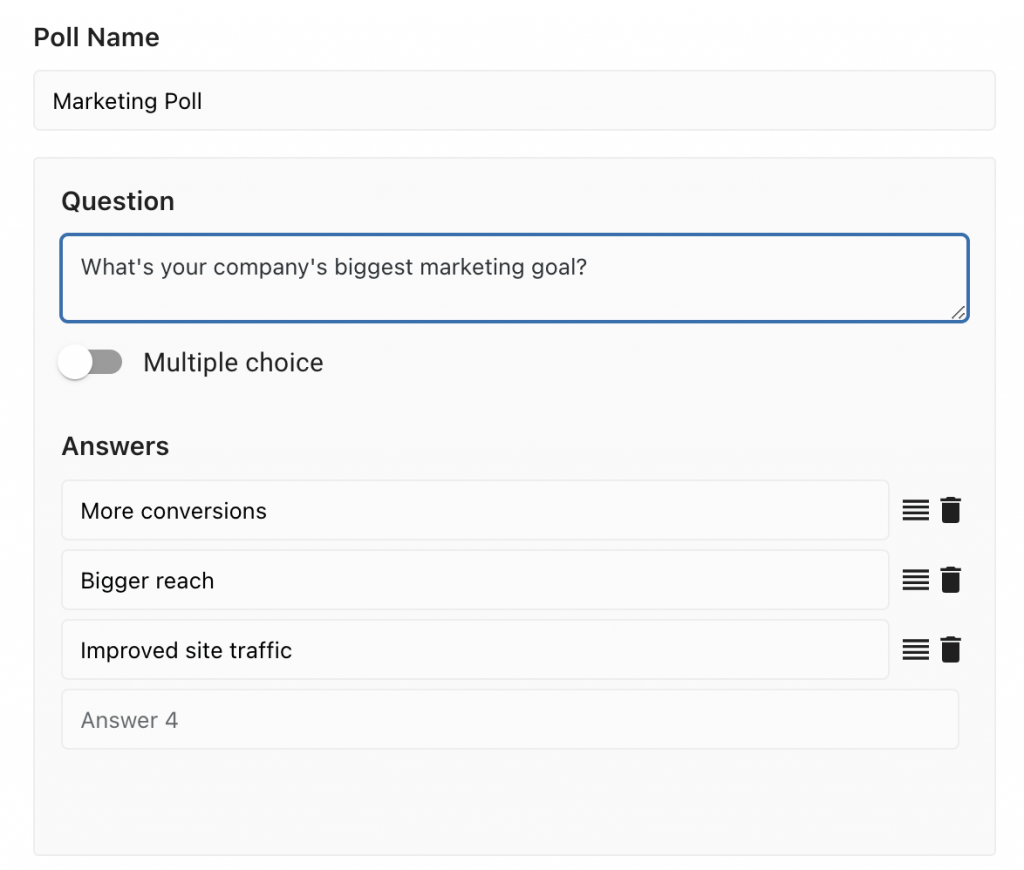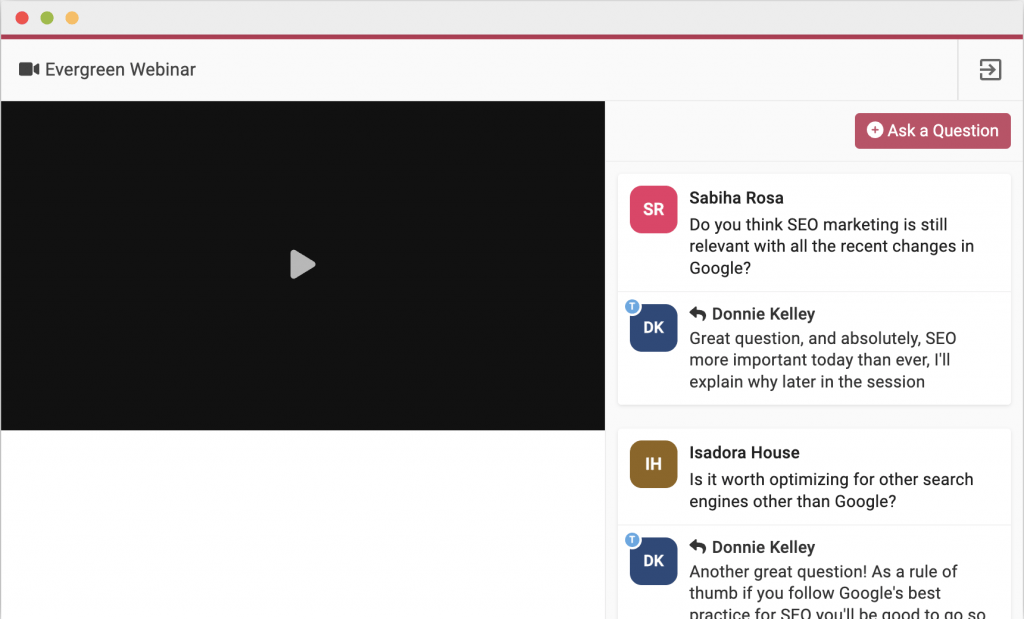Have you ever found yourself in a dilemma, unsure whether to share your business knowledge through a webinar or an online course? You’re not alone. Many businesses encounter this problem.
In this article, we’ll delve into the specifics of both options, weigh their pros and cons, help you figure out which suits your business style, and offer some smart tips to make your webinars and online courses even more effective.
Let’s see how you can take your educational content strategy to the next level.
Deciphering the e-learning landscape: webinars vs. online courses
Webinars are online events that center around a specific topic. They are often used as a way to introduce and promote other paid products.
On the flip side, online courses are complete virtual learning programs that serve as the main product rather than just a stepping stone in a sales process. It’s important to recognize that these formats can work together, with a webinar acting as a preview, leading learners toward a broader online course.
Key distinctions in content delivery and engagement
Exploring the world of content delivery and engagement reveals important distinctions between webinars and online courses, which each offer a unique way of learning:
Flexibility in content delivery
Webinars are time-bound events that create a sense of urgency and focus. Participants come together at a specific time, encouraging real-time interaction.
On the other hand, online courses give learners the freedom to set their own pace. With 24/7 accessibility, users can revisit the content whenever they want, allowing for a self-paced learning experience.
Engaging learning experiences
Engagement is key to effective learning, and both formats offer different ways to achieve it. Webinars thrive on live interactions, such as Q&A sessions, polls, and dynamic discussions, creating an immersive experience.
On the other hand, online courses utilize discussion forums, quizzes, and assignments to foster engagement through asynchronous participation.
Role of educators
In webinars, educators take the lead in live sessions, guiding learners through real-time interactions. Online courses, on the other hand, focus on content creation and organization, enabling educators to design a comprehensive learning experience.
Tools like WebinarPress bring interactivity to webinars. Features like live chat and polling options enhance the participant experience, taking engagement to a whole new level beyond the traditional webinar format. These advancements enrich the learning journey and show the evolving landscape of online education.
Evaluating the best fit for your audience and budget
The key to a successful online education strategy is understanding the needs, preferences, technical abilities, and learning styles of your audience. Are you catering to novices or professionals, for instance? Tailoring your approach to your audience gives them a more effective and engaging learning experience. Things to consider are:
Cost-effectiveness
Finances play an important role in both the initial setup and ongoing maintenance expenses. Webinars are generally a more affordable option as they require less infrastructure and setup.
However, online courses can be a better long-term investment, offering a comprehensive learning environment. This benefits the student by providing valuable educational resources. When evaluating, consider the equipment, software licenses, and potential subscription fees each option requires.
Course structure and quality
The way a course is structured affects both cost and audience engagement. Whether using automation or live sessions, factors like organization, interactive resources, video and microphone quality, and server strength all impact how effective the course is and how well the audience receives it.
Using feedback
Before committing to a specific tool or format, consider trialing different options. Ask for feedback from your target audience to understand if the chosen method aligns with their expectations and preferences. This approach makes sure that you fine-tune your strategy based on real-world insights.
|
Making the most of courses and webinars: Maximizing benefits and minimizing drawbacks
Courses and webinars both need plenty of features that foster interaction and engagement to make sure attendees get all they can out of the experience. Look for a platform that offers features such as:
- Live chat: Being able to chat live encourages real-time audience interaction. This allows participants to actively engage with presenters and each other, creating a dynamic and collaborative atmosphere.
- Polls or quizzes: Incorporate polls or quizzes to measure audience engagement and gather valuable data. This not only keeps participants actively involved, but also provides insights into their preferences and level of understanding of the content.
- Automated reminder and follow-up emails: Take advantage of automated reminder and follow-up emails to maintain interest and drive conversions. Timely communication ensures that participants stay informed and engaged throughout their learning journey.
As lack of engagement and attention are one of the main drawbacks of any kind of online learning tool, building interaction into your course or webinar is absolutely essential. It gives your readers the interaction they need to explore the topic, cement their learning, and develop a relationship with you. All of these things increase the odds they’ll retain the information and follow through for more.
🗣️ FAQs
Q: When is it best to create a webinar vs an online course?
A: Webinars are best for shorter bursts of information – for example, if you have a single contained topic you want to address. Courses are well suited for in-depth subjects which require a multi-part approach – although Webinars can pair nicely with courses, either as an ad for the full course or a preview session to get users interested.
Q: How can I address a lack of engagement during webinars?
A: To boost engagement, consider incorporating interactive elements such as polls, Q&A sessions, and breakout rooms. Using engaging visuals and storytelling techniques can effectively maintain audience interest.
Q: How can I avoid technical issues during my webinars?
A: We recommend always conducting a thorough technical rehearsal beforehand to prevent this from happening. Choose a reliable webinar platform and provide attendees with a technical guide or support contact to troubleshoot potential audio, video, or connectivity problems.
Q: How can I overcome time zone constraints when hosting webinars?
A: To accommodate different time zones, consider offering multiple webinar sessions. Alternatively, record the webinar and make it available for on-demand viewing. Utilize WebinarPress’s automated tools to ensure accessibility regardless of participants’ location or schedule.
Q: How can I funnel webinar attendees toward my full paid course?
A: Make sure your webinar properly explains what information you’ll be sharing in your course. Your goal should be to hone in on the curiosity gap for your attendees, highlighting the space between what they don’t know and what they could – if only they took your course.
Final verdict: Share your expertise using WebinarPress
Webinars provide brief and targeted information that can be consumed immediately, while online courses explore more intricate topics.
With WebinarPress, you can effortlessly switch between the two, using webinars to share valuable insights and online courses to offer more thorough knowledge. With features focused on interactivity, customizability, and automation, you can create webinars and online courses that draw the attention of a wider audience and get you noticed.
Are you ready to unlock the full potential of your knowledge? Download the WebinarPress plugin and start sharing all you know with the world today!






